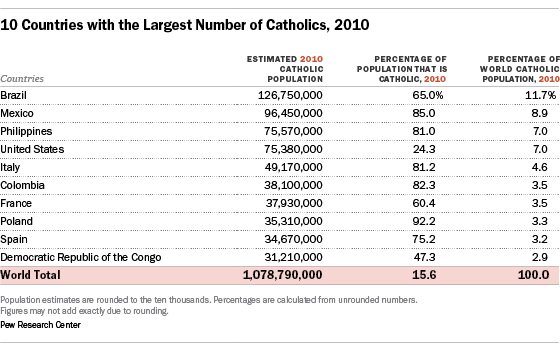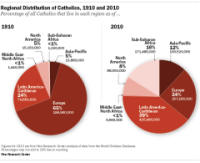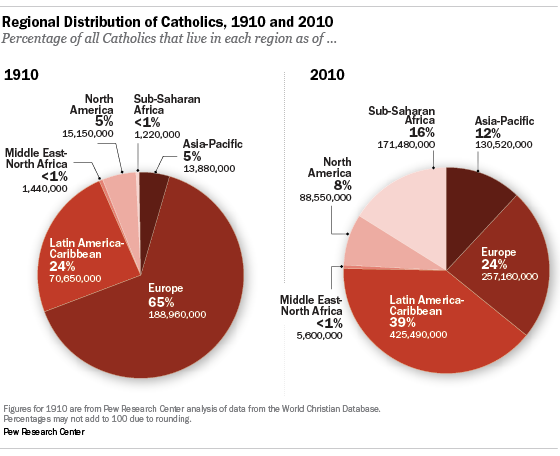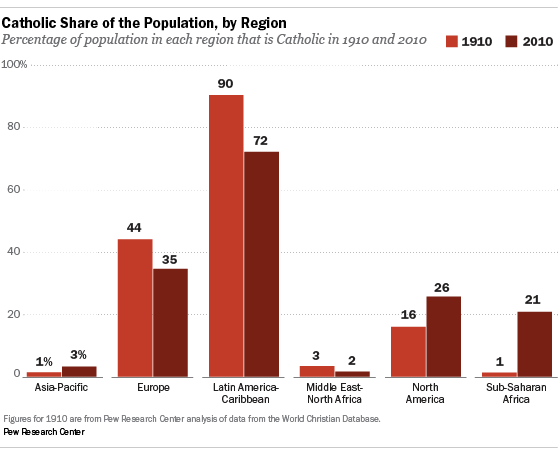In the days since Pope Benedict XVI announced his resignation, talk has turned toward who the next pope should be, and where he should be from.
Like most previous popes, Benedict hails from Europe. But as he often lamented, the church there suffers through a steady decline. Meanwhile, Catholicism is booming in Africa and predominates in Latin America.
A Pew Research Center study of the global Catholic populace brings the church’s southern migration into high relief.
In 1910, almost all Catholics lived either in Europe (65%) or Latin America (24%). By 2010, Europe was home to just a quarter of the Catholic church.
On the other hand, sub-Saharan African had only 1.2 million Catholics in 1910. Now it has 171 million.
Here in North America, the growth has been more gradual, from about 15 million in 1910 to 89 million a century later.
Overall population patterns, including birth rates, explain some of the shifts. For example, Europe was home to nearly a quarter of all people in 1910; now just 11 percent live on the continent.
At same time, the percentage of Europeans who call themselves Catholics has also declined, from 44% to 35%.
The most heavily Catholic region continues to be Latin America, but even there the church’s share of the population slipped, as the graph below demonstrates.
Overall, the country with the largest number of Catholics is Brazil, followed by Mexico and the Philippines.
 Does that bode well for Cardinal Odilo Pedro Scherer, the archbishop of Sao Paolo?
Does that bode well for Cardinal Odilo Pedro Scherer, the archbishop of Sao Paolo?
Only time – and the white smoke – will tell.
END BURKE







